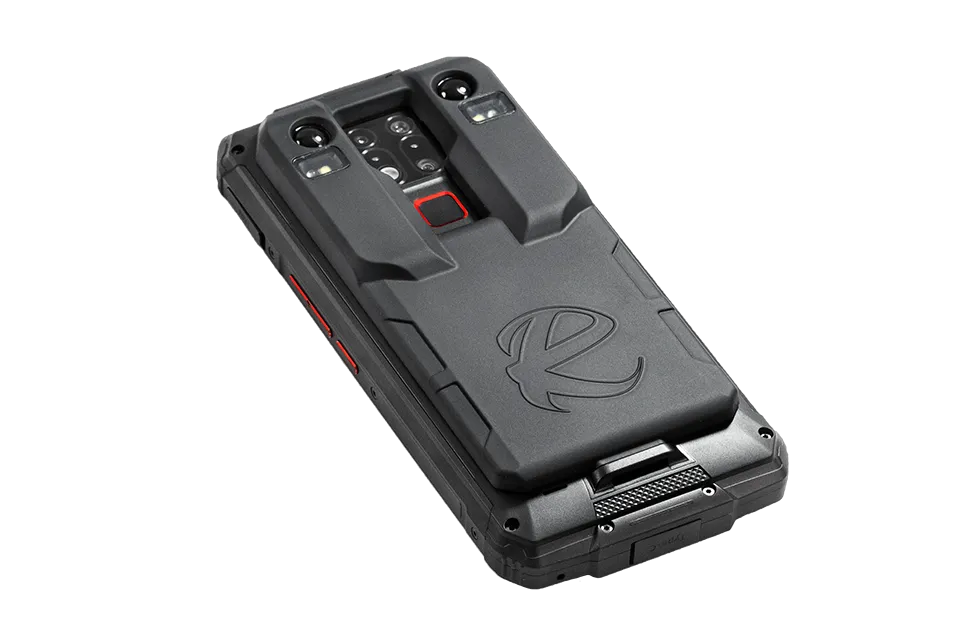What to expect in this blog
Is advanced identity verification really necessary for auto dealerships, or is it just overdoing it?
This article examines why traditional ID checks may fall short in preventing dealership fraud, explores the specialized hardware and software dealers are adopting, and highlights how these systems protect both businesses and customers.
Finance, travel, gambling, and mobility services are some of the industries that first spring to mind when people think about the use cases of ID verification solutions. But what about auto dealerships? While not brought up as often, these businesses are as sensitive as anyone to identity fraud: major cases of ID forgery have recently been reported in the US and Europe.
And while initiatives like REAL ID are expected to make fraud more difficult, dealerships still need to set up advanced identity verification systems for these initiatives to work in the first place. No matter how sophisticated a driver’s license can be, it won’t make a difference if there are no tools to verify it with.
What are those tools? In this article, we will examine how dealerships worldwide are implementing specialized hardware devices and software platforms—and what benefits they reap from it.
Subscribe to receive a bi-weekly blog digest from Regula
Do auto dealers really need advanced identity verification?
The evidence suggests that traditional ID verification practices at dealerships may not have kept up with more sophisticated threats. Identity fraud in the industry has surged in recent years, with some reports indicating a 98% YoY increase in 2024.
This may be because many dealerships still rely on photocopying the customer’s driver’s license as their primary verification method. In many showrooms, it’s routine to ask for a license while filling out paperwork, as well as to make a photocopy and visually inspect the printed information. The problem is that visual inspection and paper copies provide a false sense of security—a high-quality counterfeit or an ID borrowed from someone else may not be evident without deeper checks.
In fact, one industry survey found that only 8.6% of US dealerships collect a digital copy and actually validate the license, while just 0.6% said they also compare it against DMV records to truly verify that the license belongs to an individual. In other words, the vast majority of dealerships are missing the opportunity to detect forged or invalid IDs at the point of sale.
This makes auto dealerships an attractive target for fraudsters, which can be prevented with the help of an advanced identity verification solution.
ID verification for auto dealers: The hardware side
Physical ID documents presented by customers (typically a driver’s license, occasionally a passport or an ID card) need to be captured and examined using powerful devices. Luckily, dealerships today have a wide range of hardware tools to choose from, from purpose-built ID document readers to simpler mobile scanning devices.
Desktop document readers
Desktop document readers are small ID verification units designed for countertop use. These devices typically support ID-1 size documents (standard credit-card-sized driver’s licenses and ID cards) and often perform duplex scanning—capturing both the front and back of the ID in one go.

An example of a desktop ID document reader.
When a customer hands over their ID, the staff place it into the scanner, where it is examined under various light sources to confirm its authenticity. More specifically, a desktop ID reader will capture images under white light (visible spectrum), infrared (IR) light, and ultraviolet (UV) light. Each light source serves a distinct purpose:
White light produces a normal full-color image of the ID, showing the visible printed information and photo as the human eye sees it. It’s used to read most of the printed data, including the personal data fields and elements such as the PDF417 2D barcode, which is present on most North American driver’s licenses.
Infrared light is used to read the machine-readable zone (MRZ) on a number of IDs, since MRZ text is typically printed with IR-absorbing ink (also known as OCR-B font with IR dropout ink). Additionally, IR can expose some alterations—for example, if someone has tampered with the ID photo, IR might show inconsistencies in the ink.
Ultraviolet light causes genuine security features like fluorescent fibers, stamps, or UV-reactive ink patterns to glow. It can also check for the presence of an official holographic overlay design or patterns that only appear under UV. A real driver’s license or ID card will have predictable UV markings (according to its template), whereas a fake might lack these or use incorrect materials.
Many desktop ID readers also use a high-resolution image sensor (often around 5 MP with up to ~700 ppi optical resolution) to capture fine details. This allows the system to pick up microtext, micro-print guilloche patterns, and other tiny security elements on an ID that would blur out at lower resolutions.
An additional practical use
Using these readers is a quick way of extracting the personal information (name, address, date of birth, ID number, etc.) for the dealership’s use. In a split second, the devices can feed the data into the dealership’s system to then automatically populate CRM entries, test drive waiver forms, or credit application fields. Images of the front and back of the ID are also captured and saved digitally, making paper photocopies obsolete.
Some advanced models (like the custom Regula 72X3 reader) include RFID or contactless chip readers to harvest data from e-documents as well. For example, a modern national ID card with an embedded chip can be read by the device if it has an RFID module. Such readers adhere to standards like ISO/IEC 14443 Type A/B for contactless chips, allowing them to pull the encrypted data (after performing the required access protocols like BAC or PACE).
Portable ID verification workstations
As an alternative to desktop devices, all-in-one handheld units that integrate document scanning, data reading, and biometric capture are also becoming very popular in many industries. They are reserved for cases when salespeople meet their clients on the lot or in another setting where stationary devices are unavailable.

An example of a portable ID document reader.
A portable ID verifier is a smartphone-like device that contains specialized hardware for ID examination:
High-res dual cameras and illuminators: A device might have a 48 MP main camera coupled with IR and UV LEDs, plus an auxiliary IR camera. This allows it to capture an ID or passport under white light, IR, and UV, similar to a desktop scanner, but using a camera-based system.
Built-in RFID reader: Portable ID workstations usually come with an integrated NFC/RFID module. You can place any RFID-enabled ID on the device, and it will read the chip data (such as the digital personal information and the high-resolution biometric photo stored inside).
1D/2D barcode scanner: Using a built-in camera or a dedicated sensor, a mobile device can decode barcodes (like PDF417) and QR codes, which are commonly found on traditional driver’s licenses and vehicle documents. Crucially, barcodes that are found in mobile driver’s licenses (mDLs) can also be processed in an instant.
Touchscreen display: Unlike a tethered desktop scanner, a mobile unit typically runs an embedded operating system (often Android) with a touchscreen interface. The dealership’s or vendor’s verification app can run on the device, guiding the user through the steps.
Facial image capture: The mobile unit can use its front or main camera to take a live photo of the customer on-site. This is done so that the software can later compare this live picture to the portrait from the ID (or the one from the RFID chip) to confirm that they match.
Biometric capture: Portable ID verifiers often incorporate biometric scanners beyond the face camera. For example, the Regula 7310 includes an external fingerprint scanner with live finger detection. While fingerprinting may not be routine in a typical test drive scenario, it could be used for high-value transactions, or if the dealership wants an extra layer of verification.
ID verification for auto dealers: The software side
Hardware alone does not solve the identity verification challenge—it works in tandem with sophisticated software. When an identity document is scanned by the hardware, the software is responsible for making sense of that input. The software contains algorithms that analyze ID data and the user interfaces that dealership employees interact with.
Vendors like Regula maintain extensive libraries of document templates (over 16,000 specimens from 254 countries and territories) and security feature profiles within their verification software. For example, if you scan a German driver’s license, the software knows exactly what that license should look like (down to the placement of microtext, the UV pattern, the exact data format of the barcode, etc.), and it can compare the scanner’s input against these references. This can uncover subtle inconsistencies indicative of a fake—a font that is slightly off, an element that’s misaligned, or a UV image that doesn’t match the official one for that year and country.
Additionally, advanced software like Regula Document Reader SDK leverages mobile NFC verification to confirm the genuineness of the RFID chip, if there is one in the given document (e.g., a national ID card).
A biometric match as an extra layer of defence
Specialized face-matching software like Regula Face SDK can provide a healthy security boost—once the ID is scanned, the dealership staff can capture a live facial image of the customer for more checks. More specifically, the captured image can be compared to the ID photo (1:1 verification) and/or to an entire database or a watch list (1:N identification). If the faces match to a high statistical confidence, the system gives a green light; if not, the staff is alerted to a possible impersonation attempt.
From a dealership employee’s perspective, the software usually presents a simple interface (possibly integrated into the dealer’s CRM or finance system), indicating the verification result along with the customer data extracted from the ID. If everything gets a green light, the sales process continues; if not, the dealership may have protocols like asking for another form of identification, involving a manager, or declining to proceed with the transaction.
The software can also log each verification attempt. That log (which may include the ID images, a timestamp, and details of the checks performed) is stored in the deal’s electronic record. Having a verified ID record for each sale protects the dealership in multiple ways—if there’s an identity-related dispute or audit later, they can demonstrate that they performed due diligence.
How Regula protects auto dealerships from identity fraud
Identity verification for car dealerships is shifting from a minor formality to a major concern. As criminals continually probe dealerships’ defenses with fake IDs, the industry’s adoption of IDV technology is a necessary step to protect assets and customers alike.
In practice, implementing advanced ID verification in a dealership requires a combination of hardware and software—and Regula is a one-stop shop for both kinds of solutions.
On the hardware side, the Regula 72X3 for stationary examinations and the Regula 7310 for on-the-go checks are powerful devices to build frontline defenses. They can instantly verify traditional and mobile driver’s licenses, national ID cards, and other ID-1 documents from all over the world (Regula 7310 also supports other document formats such as passport booklets).
As for software, Regula Document Reader SDK processes images of passports and driver’s licences, and performs a number of advanced checks on them. This includes reading the machine-readable zone (MRZ), validating RFID chip data, and inspecting all major dynamic security features, including holograms, optically variable inks (OVI), multiple laser images (MLI), and, most recently, Dynaprint®. At the same time, Regula Face SDK conducts instant facial recognition and prevents fraudulent uses of fake or stolen IDs.
Let’s drive the future—together. Book a call to learn more about our solutions!





